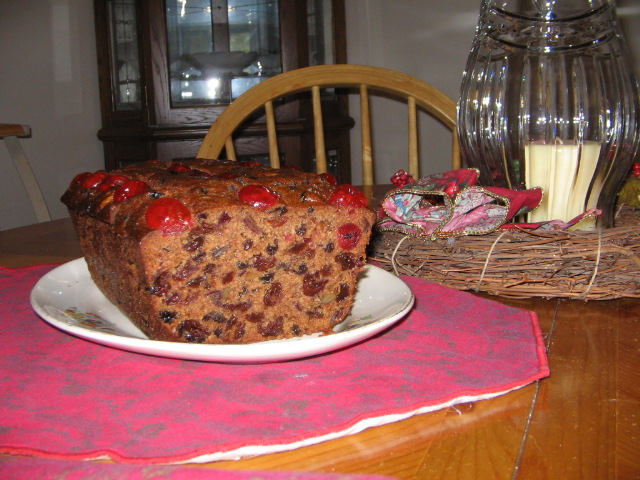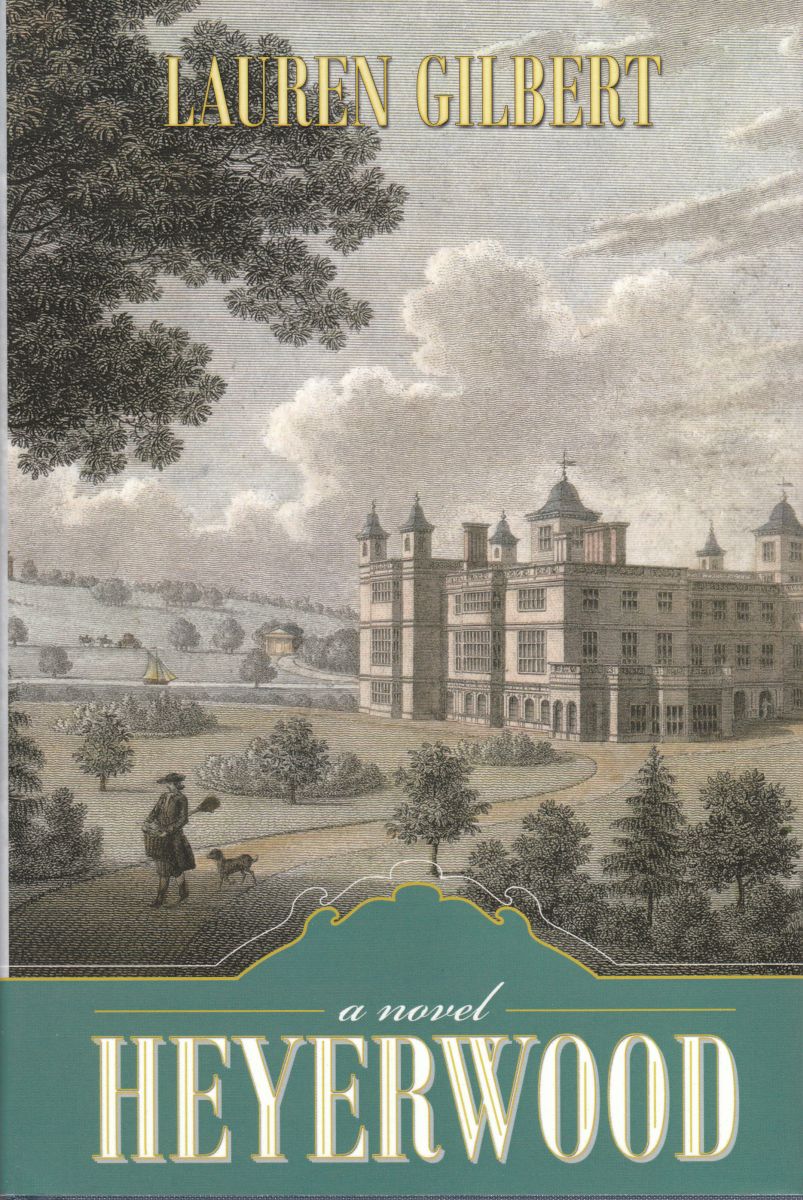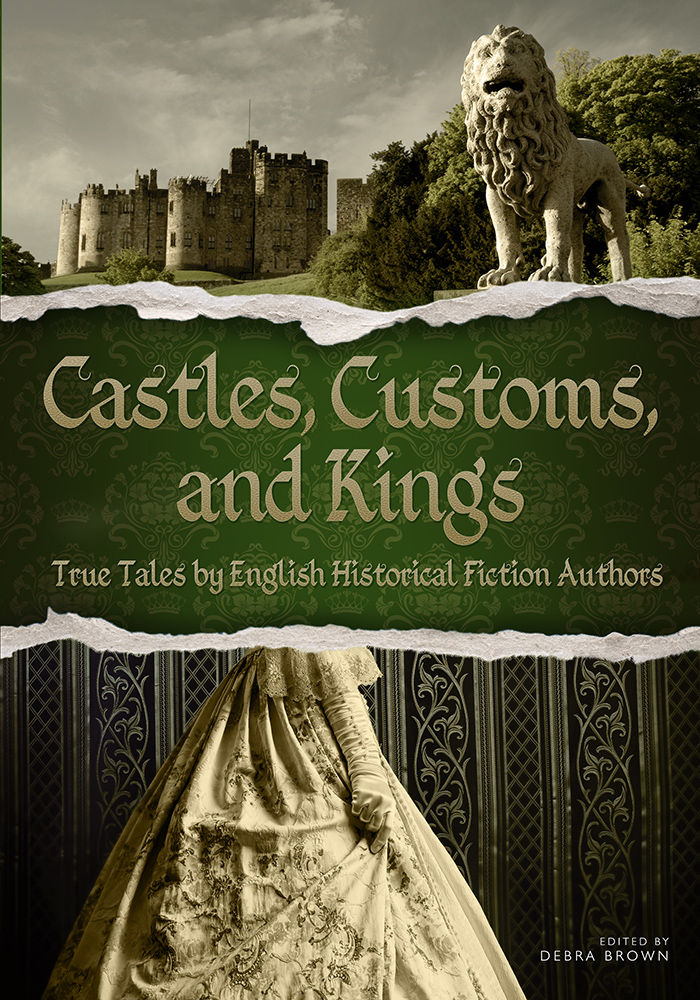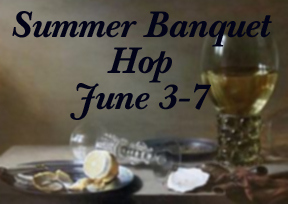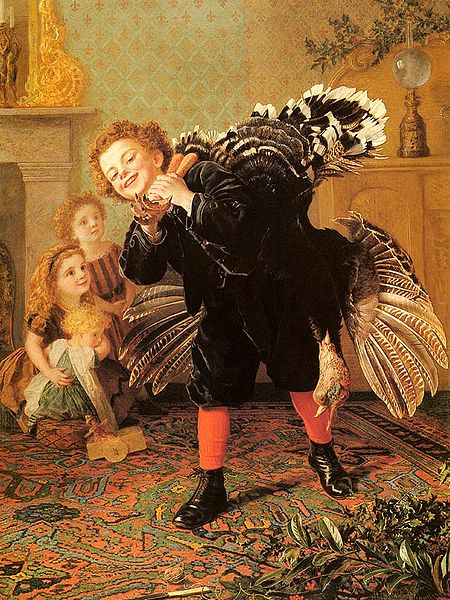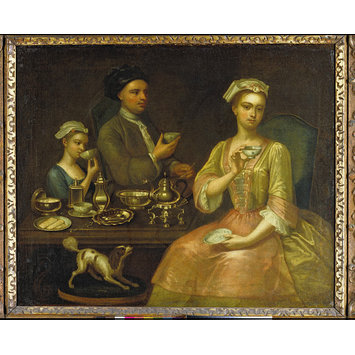
by Lauren Gilbert
Mint sauce has a long history in England, traditionally served with roast lamb. Mint sauce consists of mint leaves, finally minced, and mixed with vinegar and some sugar. This is very different to the mint jelly served with lamb when I was growing up in America. This type of “sweet and sour” sauce goes back to medieval times, and similar mint sauces were very popular in France and Italy where mint was more widely used. Traditional has it that, in an effort to slow consumption of lamb and mutton to protect the wool trade (less lamb eaten meant more sheep to shear), Elizabeth I decreed that lamb and mutton could only be eaten with bitter herbs. Mint is one of the bitter herbs, and cooks discovered quickly that it pairs well with lamb and mutton. Clarissa Dickson Wright considered mint sauce to be the last culinary link with the Crusades. At any rate, mint sauce has been a favorite condiment with lamb and mutton since the 16th century. As with any popular food product, mint sauce has been tweaked over the centuries. While regular mint sauce seems to be considered essential for lamb, other sauces have been devised for use with other meats, such as a gooseberry and mint sauce recommended for port and goose.
In 1200 ENGLISH RECIPES by Ethel Meyer, she took 2 T of finely chopped mint leaves, 1T of granulated sugar (American) or castor sugar (British), and 6 T vinegar. After mixing the mint and sugar, the mixture must sit for an hour; then the vinegar can be added added gradually, mixing well between each addition. (This quantity is recommended for 4-5 people.) This seems to be the basic recipe. Some add a squeeze of lime or lemon. Some use white wine vinegar; I found another using malt vinegar. Some specify spearmint leaves, while others go with peppermint. Several recommended that the finished sauce have the consistency of thick cream. As you can see, this is a very flexible recipe and can be easily adapted to personal taste.
Sources:
“20 Quirky Facts About British Food.” https://www.google.com/?gws_rd=ssl#q=interesting+british+food+facts
Love to Know. “List of Bitter Herbs.” http://herbs.lovetoknow.com/List_of_Bitter_Herbs
Meyer, Edith. 1200 ENGLISH RECIPES. Originally published 1898: Murray, London. Published 2010: Salzwasser-Verlag, Bremen, Germany. GoogleBooks: https://books.google.com/books?id=Sb5LF9ztzFgC&pg=PA199&lpg=PA199&dq=how+to+make+traditional+english+mint+sauce&source=bl&ots=xeAyxn309w&sig=0Mg9MmYR6OlWKVJHtlLrHdDrHog&hl=en&sa=X&ved=0CDUQ6AEwBDgoahUKEwj2j6f9xpfIAhWOuB4KHV9RA_U#v=onepage&q=how%20to%20make%20traditional%20english%20mint%20sauce&f=false
Dickson Wright, Clarissa. A HISTORY OF ENGLISH FOOD. 2011: Random House Books, London.
Image: Wikimedia Commons. https://upload.wikimedia.org/wikipedia/commons/thumb/f/f1/Gr%C3%BCn_-_The_End_of_Dinner.jpg/640px-Gr%C3%BCn_-_The_End_of_Dinner.jpg
Celebrating A New Release!
Castles, Customs, and Kings: True Tales by English Historical Fiction Authors, Volume 2
Edited by Debra Brown and Sue Millard
An anthology of essays from the second year of the English Historical Fiction Authors blog, this book transports the reader across the centuries from prehistoric to twentieth century Britain. Nearly fifty different authors share the stories, incidents, and insights discovered while doing research for their own historical novels.
From medieval law and literature to Tudor queens and courtiers, from Stuart royals and rebels to Regency soldiers and social calls, experience the panorama of Britain’s yesteryear. Explore the history behind the fiction, and discover the true tales surrounding Britain’s castles, customs, and kings.
I am so honored to be included in this volume!
Purchase links:
Amazon US http://www.amazon.com/Castles-Customs-Kings-English-Historical/dp/0996264817
Amazon UK http://www.amazon.co.uk/Castles-Customs-Kings-English-Historical/dp/0996264817
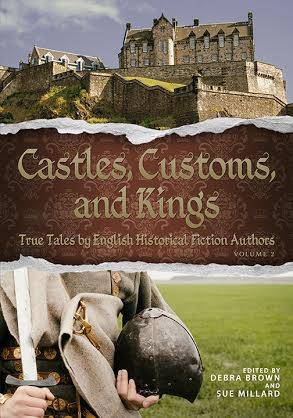
Visit these fantastic sites in the Blog Hop (they are coming live at different times so check back if you can’t find it the first time!):
1. Whisky vs Brandy http://huntersjones.com/2015/09/29/whiskey-vs-brandy/
2. Hunting the Wren in Wales and Ireland http://juditharnoppnovelist.blogspot.co.uk/2015/09/hunting-wren-in-wales-and-ireland.html
3. Archery in Tudor England http://www.linkytools.com/click_linky.aspx?entryid=8960148
4. A Curious Variant on Wassail http://www.linkytools.com/click_linky.aspx?entryid=8960621
5. 17th Century Marriage Day Customs http://www.shapingthefacts.blogspot.com/
6. Harvest Moons and Customs http://www.linkytools.com/click_linky.aspx?entryid=8962474
7. 17th Century Medicine http://www.linkytools.com/click_linky.aspx?entryid=8961953
9. A Quirky Look at the History of Nursery Rhymes http://www.linkytools.com/click_linky.aspx?entryid=8962600
9. Animals on Trial http://www.linkytools.com/click_linky.aspx?entryid=8961874
10. What was it like to live as a 16th century nun? http://www.linkytools.com/click_linky.aspx?entryid=8962444
11. Historical Custom: The Flitch of Bacon Custom http://www.linkytools.com/click_linky.aspx?entryid=8961380
12. Michaelmas in Medieval Britain http://www.linkytools.com/click_linky.aspx?entryid=8962619
13. The Peculiar Custom of Electing Kings http://www.linkytools.com/click_linky.aspx?entryid=8962286
14. Queen for a Day-of Bride Crowns of Gold and Myrtle https://annabelfrage.wordpress.com/2015/09/30/queen-for-a-day-of-bridecrowns-in-gold-and-myrtle/
15. Deadly Cat Customs http://graceelliot-author.blogspot.co.uk/2015/09/deadly-cat-customs.html
16. “Name that Member”: Weird Parliamentary Customs https://alwayswantedtobeareiter.wordpress.com/2015/09/30/name-that-member-weird-but-wonderful-british-parliamentary-customs/
17. Sweating with the Mohocks http://www.madamegilflurt.com/2015/09/sweating-with-mohocks.html
18. The Evil Eye and Vampires: Superstition in the Ottoman World http://www.kathryngauci.com/blog-06-feb-11-2015-evil-eye-vampires-superstition-ottoman-world/
19. Megaliths in the Popular Imagination http://mark-patton.blogspot.co.uk/2015/09/negotiating-with-unexplained-megaliths.html
20. Odd Medieval Celebrations http://lanawilliams.net/home.html
21. The Unusual Marriage Customs of Medieval Ireland http://empowell.blogspot.com/2015/09/polygamy-divorce-more-unusual-marriage.html

